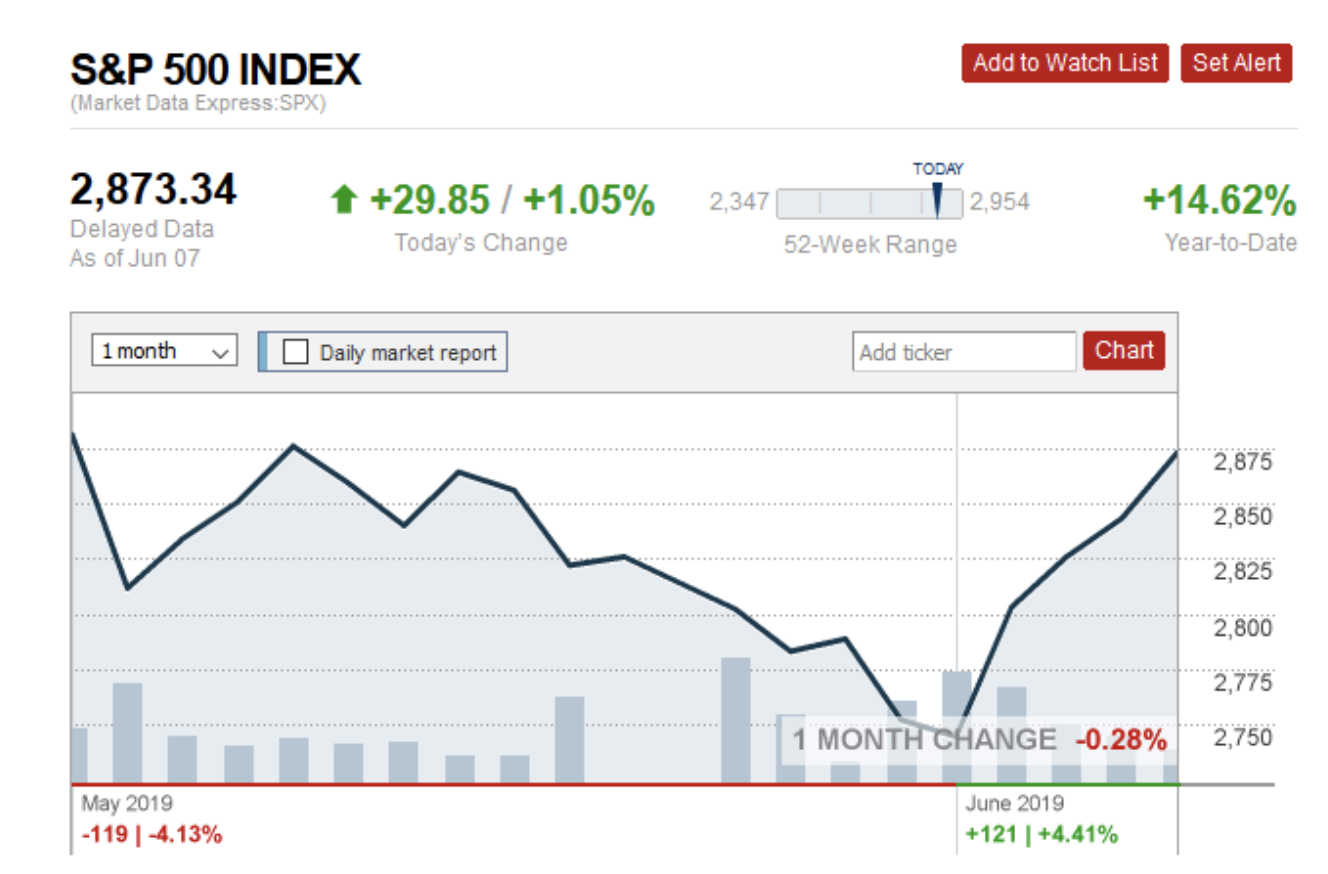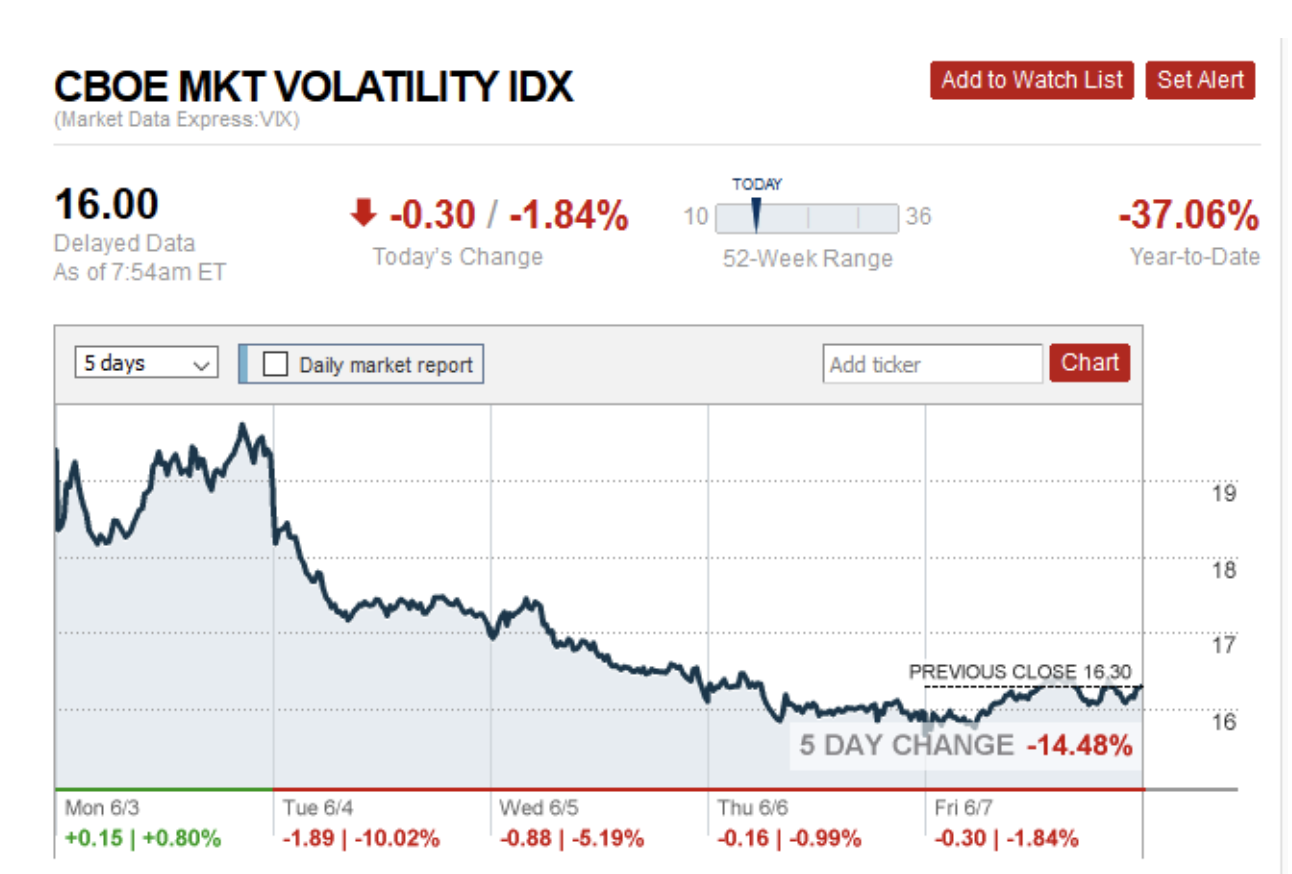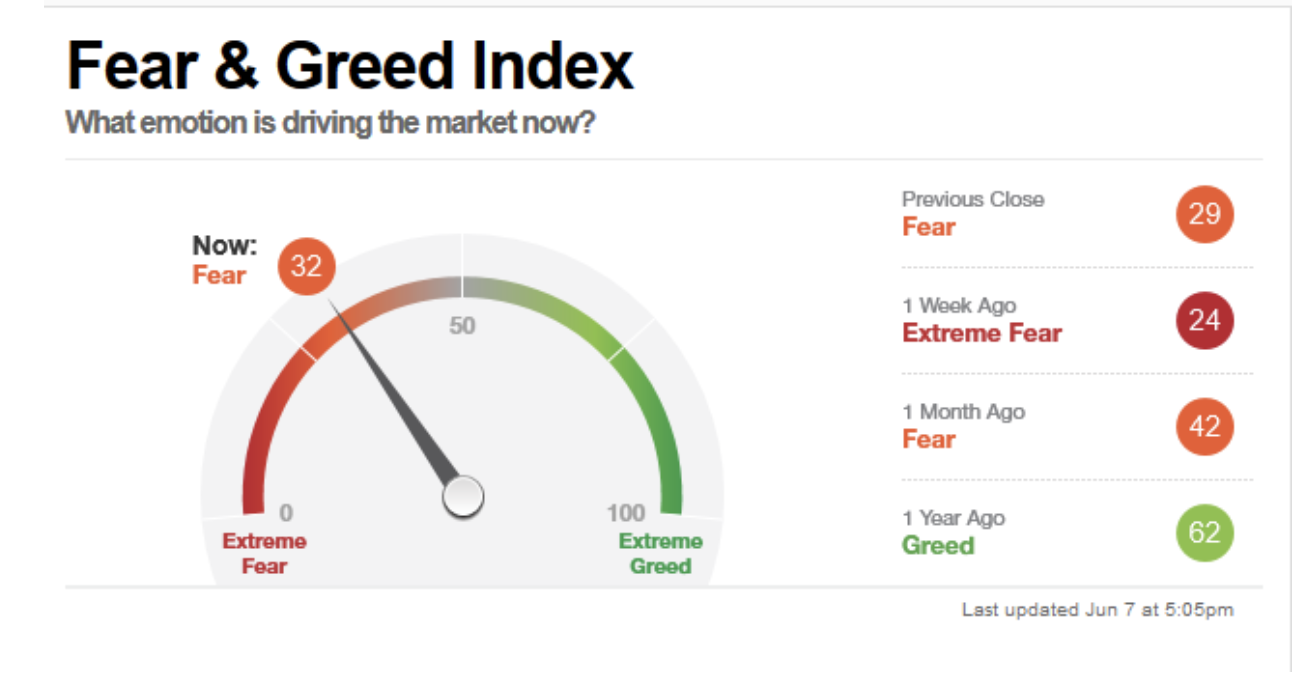The U.S. stock market went through a pretty brutal period in May, correcting nearly 10 percent and looking in danger of suffering a fatal crash that would ultimately end the longest bull run in history. Yet, somehow, this bull keeps finding a way to survive-- and even thrive.
While not exactly a goldilocks background, equities have surged in the month of June, managing to pare back most of last month’s losses. The return of optimism has been fueled by a growing conviction that the Federal Reserve will soon reverse its rate hike cycle. It might seem counterintuitive but the stock market has been reacting positively to signs of a slowing economy in the belief that such a slowdown will induce the Fed to enter a period of easing up on rates.
Case in point is the way stock moved higher on Friday after the U.S. Bureau of Labor Statistics released a weak job scorecard. Market volatility has also dropped by a considerable margin over the past week.

(Click to enlarge)
Source: CNN Money

(Click to enlarge)
Source: CNN Money
The Fed, and only the Fed
Wall Street certainly seems to be buying the rate-cut narrative in spades.
Brian Belski, chief investment strategist at BMO Capital Markets, says the current breed of investors has come to believe that only the Fed’s actions matter in the grand scheme of things while traditional macro factors such as inflation and even geopolitical issues are frequently glossed over. As such, investors have been rushing to buy stocks whenever the central bank adopts a dovish stance and selling whenever it waxes bearish. The reasoning here is that past recessions have mostly come at the height of rate hike cycles and cutting rates might help save the situation or at least delay it.
Related: Is Asia About To Create Its Own Common Currency?
Rates strategist at Bank of America Merrill Lynch Mark Cabana believes that rate cut are all but assured now.
According to data by CME Group, the market has penciled in a 25 percent chance that the Fed will lower rates at its June 18-19 meeting and a more than 80 percent chance that it will do so during its July meeting.

(Click to enlarge)
Source: Admiral Markets
Wall of worry
Yet, honing in on the Fed poses some risks. The coming rate-cut cycle is likely to look quite different from its predecessors, bearing in mind that central banks have less ammunition now than in the past thanks to historically low rates. Interest rates in Europe are already in negative territory while the Fed’s 2.25-2.5 percent benchmark leave little room to maneuver.
What we have on our hands is an unprecedented situation that no one knows for sure how it’s going to end.
Moreover, not everybody believes that rate cuts are a done deal at this point. PNC chief economist Gus Faucher thinks the Fed is likely to hold rates in June and only increase in July if we get another soft job report.
Then there’s the question of what eventually happens if the stock markets continue to decouple from economic fundamentals. The divergence between stocks and the bond market suggest that another correction might not be too far off.
Calm before the storm?

(Click to enlarge)
Source: CNN Money
Despite the latest upturn, financial markets are far from being confident with the overall sentiment still decidedly bearish.
In fact, Forbes contributor Bill Sarubi thinks that this could merely be the calm before the storm. He argues that according to the decennial pattern developed by Edgar Laurence Smith of Ameritrust Bank, bear markets tend to begin in years that end in 0 and picks 2020 as the year when the dreaded bear will strike. Further, he says that stock markets tend to perform best in the year preceding an election and are at their weakest in the year immediately after one.
Nevertheless, there’s still some room for equities to run with both the S&P 500 and the Dow Jones expected to rally to new all-time highs for the rest of the year.
By Alex Kimani for SafeHaven.com
More Top Reads From Safehaven.com:

















